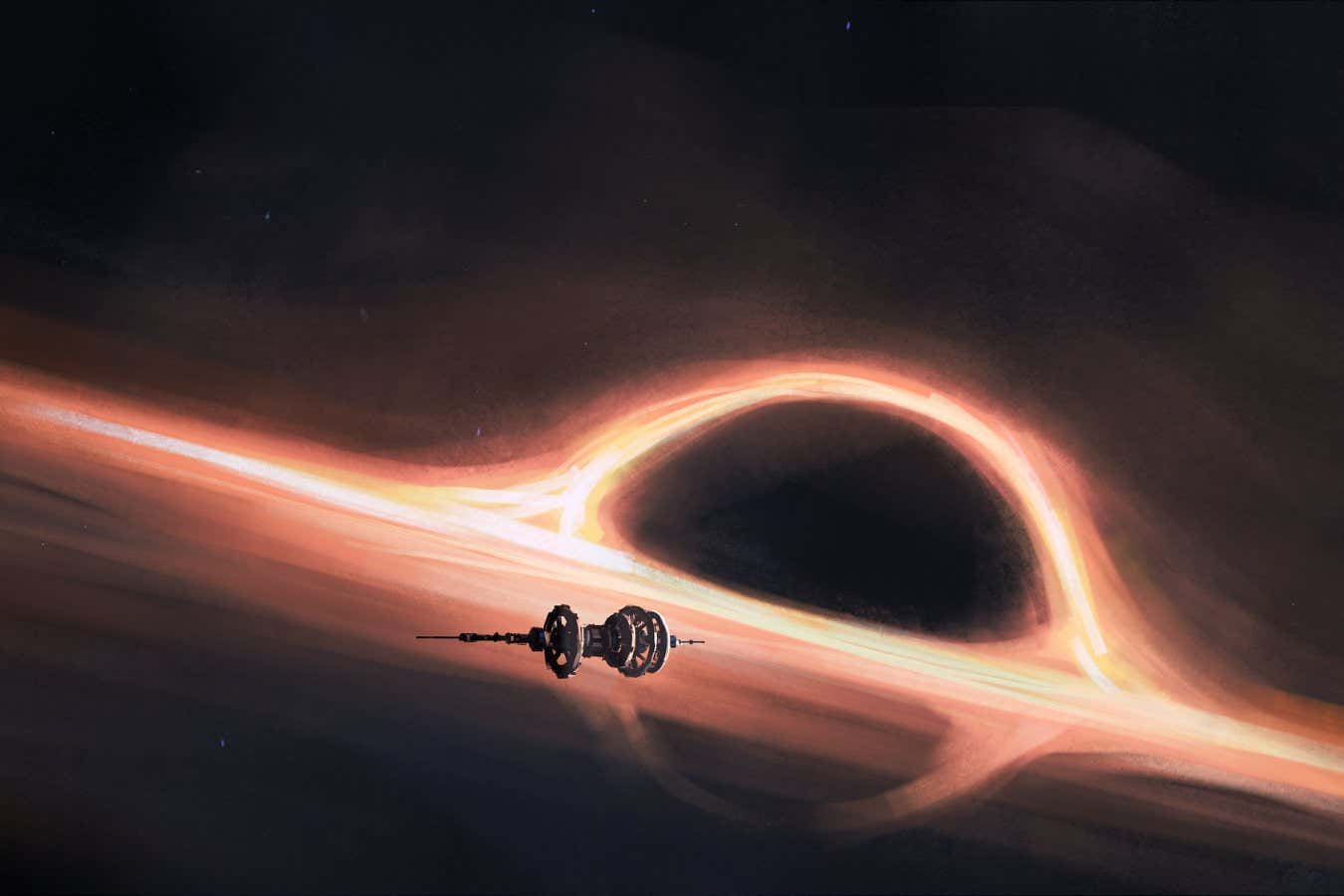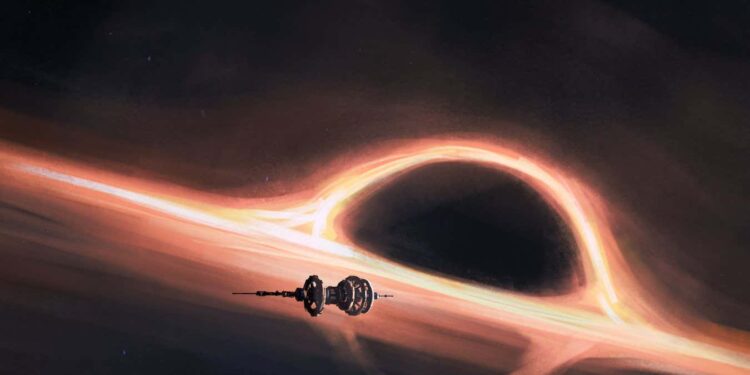
An illustration of a spaceship sailing close to a black hole
liuzishan/Getty Images
An interstellar probe sent to a black hole could complete its journey and send data back to Earth in less than a century – if we can find a black hole close enough.
Cosimo Bambi at Fudan University in Shanghai, China, has developed a blueprint for such a mission, using technology that may be available in the next 20 to 30 years.
Getting up close to a black hole would allow us to test Albert Einstein’s theory of general relativity and reveal what happens to the fundamental constants of physics in an extreme gravity field.
The closest known black hole to us is about 1500 light years away, much too far for us to send a craft there. But in the Milky Way, there is thought to be roughly one black hole for every 100 normal stars. That means there is likely to be a black hole somewhere within 20 to 25 light years of us, says Bambi.
Spotting one, however, will be tricky. As black holes don’t emit light, astronomers must detect them by observing their effects on stars or how they distort light.
To reach a black hole within 25 light years of our solar system, technological developments will be needed, but it “should be feasible”, says Bambi. The journey could be made in under a century with a nanocraft weighing about a gram and carrying a 10-square-metre sail, which would allow it to be propelled by light. This craft could be accelerated to around a third of the speed of light with a blast from an ultra-high-powered laser.
“Light sails and nanocrafts, as of now, appear to be the most promising solutions for interstellar missions, as they can travel at some fractions of the speed of light,” says Bambi. But a laser with the power required would probably cost around €1 trillion today, he estimates.
In order to test the predictions of general relativity, it may be necessary to dispatch two miniature spacecraft, or for the main nanocraft to release a second probe once it nears the black hole. The second nanocraft would approach the black hole while the primary vehicle would remain at a distance, collecting data to be sent back to Earth.
Geraint Lewis at the University of Sydney says nothing in the proposal is impossible, though every element is ambitious.
However, the century-long timeframe of the proposed mission means the nanocraft may be obsolete by the time it arrives at its destination, says Lewis. “Given 100 years of technological development, are we going to have new kinds of engines by then that we can’t really even think about today?”
“If there ever is a mission to a black hole, it will probably look as similar to this paper as somebody 500 years ago imagining what the 20th century will be like.”
Lewis says Bambi’s plan doesn’t address how to decelerate the nanocraft once it arrives at the black hole. Bambi says the simplest solution isn’t to try to slow the vehicle down, but rather for the mothership to release probes that can relay data back to the main craft, which, in turn, can transmit the information back to Earth.
“In such a case, the probes do not stop and start orbiting around the black hole; they just pass by. Some of them can be swallowed by the black hole and that should be enough to test the gravitational field of the black hole,” says Bambi.
Sam Baron at the University of Melbourne in Australia says Bambi’s blueprint is one of the most “speculative” research papers he has ever read – but a century ago, the construction of the Large Hadron Collider would have seemed like science fiction and now it is a reality.
“I think that the use of something very small is probably the way to do it,” he says. “It’s just whether we can actually engineer something that can do all the things that this paper outlines.”
It won’t be possible for humans to visit a black hole, says Bambi, as our bodies wouldn’t be able to cope with the 10,000 g acceleration forces that the nanocraft will have to endure. That is, unless we find a space-time-warping wormhole to use as a shortcut.
“We would really need a nearby wormhole like in the movie Interstellar to make a similar mission with humans possible,” he says. “In my proposal, unfortunately, there is no wormhole.”

The world capital of astronomy: Chile
Experience the astronomical highlights of Chile. Visit some of the world’s most technologically advanced observatories and stargaze beneath some of the clearest skies on earth.
Topics:
Source link : https://www.newscientist.com/article/2491589-how-we-could-explore-a-black-hole-with-an-interstellar-nanocraft/?utm_campaign=RSS%7CNSNS&utm_source=NSNS&utm_medium=RSS&utm_content=home
Author :
Publish date : 2025-08-07 16:00:00
Copyright for syndicated content belongs to the linked Source.














